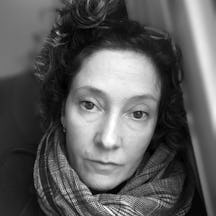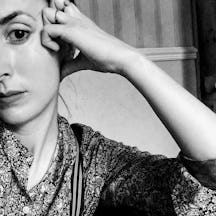When Rachel Genn’s older brother, John, was 18, he nearly died in a road accident. This disabling tragedy proved to be the opening act for a series of events that set the tone of his life.
In October 1976, my brother, 18, went missing for two days and I do not know which of the six of us read in the paper that a lad had been found wearing a watch engraved with: “To John, All my Love Dot.”
This was how I discovered my big brother’s girlfriend worked in a jeweller’s shop. A five-year-old instinctively knows this just another toy shop, and I peeked at Dot from behind the settee, then cautiously did cartwheels for her. She blinked a lot when I went too close to her face.
Working in a jeweller’s, she most probably got the watch engraved for free, but that isn’t the point. Engraving was confident; permanent and indelible, no going back. I find it difficult to describe quite what the engraving meant to me beyond its poshness. But as a clue in this case, it meant we could reclaim our brother, his comatose body snared, then dragged doggedly back to us by the engraver’s copperplate loops. This act of salvage increases the carat of this story: the suffering is somehow made more of by the engraving.
He was running when hit by the last bus. I imagined the drivers idling, grinding down into their seated root, isolated in their cabs – working blokes were rarely allowed to synchronise – ready for the klaxon at midnight and the race to leave the high street.

“In 1976, my brother went missing for two days and I do not know which of the six of us read in the paper that a lad had been found wearing a watch engraved with: ‘To John, All my Love Dot.’”
If I went close up, the drivers shot off and I saw him hit, bam! To soften it, I’d take it up to the eye of a drone, up to a slower height where rectangles of buses, rounded by distance, not quite unsquare, nosed out into empty streets like whales.
Is a story the value of a life? Can you match the two? Is that the game? Or is it forgery?
He came down on his head and his legs at the same time, and being five, I had him speeding towards the ground like a cartoon magnet. There was no chance of a party for me now. They whispered, “He’s in the Northern,” and mouthed, “He’ll not talk again,” but to surprise everyone, he rose from his coma one night, deciding he didn’t need his traction and would walk to the toilet himself.
Suffering that opened worlds
Other things happened, sadder things than this: we had no idea that this was a tune-up to the song of despair his life would become, and as his family we were bound to revisit him hurtling back toward the ground after being knocked 50 feet in the air (the sickness, still now in the thought).
Each of us received and transmitted the story differently. Writing “what happened” doesn’t account for all the times I have thought about it, all the times we have talked about it, the resentments about who gets it wrong and why. But that this is a single event embossed exactly into each of our impressionable realities? That is not how it goes.
Another thing that got whispered was that the brain keeps vibrating after a fall like that.

“I find it difficult to describe quite what the engraving meant to me beyond its poshness. But as a clue in this case, it meant we could reclaim our brother.”
I balk at the idea that his story might be useful rather than beautiful.
A person’s story keeps vibrating too, and we have had to live with that. When he worked as a scaffolder after this accident, the boss would ring him to get him up. Despite his crutches, he’d been out all night and came home beaten up. I skittered downstairs to the phone, telling the boss that I’d pass on his message, and as I put the phone down, my brother would shout for me to fetch him a mirror. I tried to look at his bloody face as the mirror could.
A decade later, a further accident meant my brother saw things quite differently; his suffering opened him up to worlds beyond this one. The tragedies turned him around to face a new horizon, but how to show that to the daytime drinkers in the Heeley and Sheffield? – lads who hunched their shoulders further over the bar when The Prophet limped in.
John astral-planed as sincerely as he supported Sheffield United and it was this arrangement, one leg in heaven, one on earth, that made him awkward and intense; scared to death, yet certain of things. He was rare indeed: his prophecies were a series of hot coals to be received – you had to have the hands for it, and he didn’t allow gloves. But he was human! Like the brothers in a fairy tale, our John and Andrew once filled my sister’s boyfriend’s motorbike gauntlets with Big Soup.

“John astral-planed as sincerely as he supported Sheffield United and it was this arrangement, one leg in heaven, one on earth, that made him awkward and intense.”
The reinvention of my family
I run facts past siblings, hoping they won’t oppose my take, because I don’t want them interfering with my version, and yet, anything I consider valuable is the overlap between a number of perspectives; to claim the right version, to me, is wrong. His suffering lives between us. “What really happened” stinks of respectability and I worry that too true a version might make the story loveless. That he wouldn’t survive his own story.
I keep faith that what we think is important, is important. I am writing about the trials of my eldest brother’s life because nothing could be more fascinating to me, and hope this is enough for it to be worth something to others. I balk at the idea that his story might be useful rather than beautiful.
Am I hawking his pain? I am trying to show you why he was like he was, hoping you never mistake the glint of his spirit (hidden in the flea market of all stories) for tin. I want you to buy it, this precious story, and I won’t haggle. The mirrors that we hold up to our families can’t be escaped; I will always reflect into what I think I am trying to do. The way my family reinvented itself around my brother’s tragedies may be just as important as the story of his life.
Just after his death I see a tweet. Some of us laugh about it: at the old-timer who photocopied their phone to send a photo to their daughter, but I erupt in a single, revelatory, “Ha!” A yelp of joy, I guess, that comes from knowing deep down that this is how stories work best; stuff gone wrong for good reason.
A photocopy of a photo on a phone, resting on a letter. Good reason holding madness suspended. A watch on the wrist of a brother, broken, spaced out, returned.
About the contributors
Rachel Genn
Rachel Genn is a senior lecturer at Manchester Writing School and the University of Sheffield. Formerly a neuroscientist, she was a Royal Society Fellow at the University of British Columbia, Canada, and has written two novels: ‘The Cure’ (2011), and ‘What You Could Have Won’ (2020). She was a Leverhulme Artist-in-Residence at the University of Sheffield (2016) and has non-fiction in Granta, the Los Angeles Review of Books, Aeon, and the New Statesman. She is currently working on a collection of non-fiction about her family’s injuries, fighting and addiction to regret.
Sally Anne Wickenden
Sally Anne Wickenden is an international artist and illustrator from Sheffield, England. Her work inhabits the dreamy, liminal spaces somewhere between the familiar and the otherworldly, with human and personal connections as deep as they flow.


